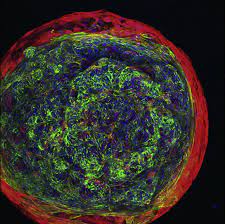Metastatic melanoma or stage IV melanoma is the advanced stage of skin cancer where the cancer has spread from the skin to other organs of the body. It is one of the most lethal types of cancers with traditionally poor prognosis. However, recent developments in targeted therapies and immunotherapies have revolutionized the treatment landscape for metastatic melanoma.
Emergence of Targeted Therapies
The first breakthrough came in the form of targeted therapies that work by inhibiting specific mutated genes that drive cancer growth. Around 50% of melanomas have a mutation in the BRAF gene which leads to uncontrolled cell proliferation. In 2011, the FDA approved vemurafenib and dabrafenib which are BRAF inhibitors that specifically target the mutated BRAF protein. These drugs achieved response rates as high as 50% along with improved progression-free and overall survival compared to chemotherapy. However, the median duration of response was only around 6-7 months due to development of resistance.
Combination Therapies to Delay Resistance
To delay resistance to BRAF inhibitors, the FDA approved combinations of BRAF and MEK inhibitors in 2014. MEK is a downstream molecule of BRAF and combining a BRAF inhibitor with a MEK inhibitor blocks alternate pathways that cancer uses to develop resistance. Combinations like vemurafenib plus cobimetinib and dabrafenib plus trametinib significantly improved progression-free survival compared to BRAF inhibitors alone. However, resistance still develops in most patients within 1-2 years prompting the search for other treatment options.
Immunotherapies Usher in a New Era
A major breakthrough came in 2011 with the approval of ipilimumab, the first immunotherapy approved for Metastatic Melanoma Therapeutics. Ipilimumab works by releasing the brakes on immune system through blocking CTLA-4, a molecule that inhibits anti-tumor immune response. It achieved durable complete or partial response in around 10-15% of patients, but also caused immune-related side effects in over 50% of patients.
Breakthrough of Checkpoint Inhibitors
More potent checkpoint inhibitors targeting PD-1 and PD-L1 were developed subsequently and demonstrated better efficacy with less toxicity compared to ipilimumab. Pembrolizumab and nivolumab targeting PD-1 were the first to get FDA approval in 2014 and achieved response rates of over 40%. Drugs targeting PD-L1 like atezolizumab and avelumab also entered the clinic with response rates of 20-25%. Dual blockade combining CTLA-4 and PD-1 inhibitors demonstrated improved clinical outcomes, which have now become the standard first line treatment.
Combination Therapies with Immunotherapy
Now combination strategies are being employed to further boost efficacy of immunotherapy. BRAF/MEK inhibitors are being combined with checkpoint inhibitors like ipilimumab or pembrolizumab with the goal of overcoming resistance to targeted therapies and inducing stronger anti-tumor immune responses. Results from early studies have shown improved progression-free and overall survival compared to monotherapy. Biomarker studies are underway to identify patients most likely to benefit from these combinatorial regimens.
Future Directions
Other promising immunotherapeutic targets like LAG-3, TIM-3, IDO are also being explored. Adoptive cell transfer utilizing genetically engineered T-cells expressing T-cell receptors (TCRs) or chimeric antigen receptors (CARs) targeting melanoma associated antigens is an emerging area attracting significant research. Neoadjuvant use of immunotherapy before surgical resection of metastases increases confidence of achieving clearance of all disease. Novel combination regimens and predictive biomarkers will help tailor treatment to maximize benefits for each patient. Efforts are also being made to counter resistance to immunotherapy. With continued advancements, metastatic melanoma may become a chronic disease managed long term with combination therapies.
*Note:
1. Source: Coherent Market Insights, Public sources, Desk research
2. We have leveraged AI tools to mine information and compile it




